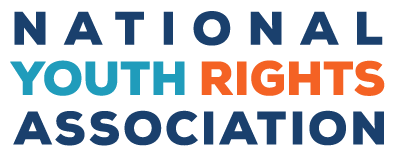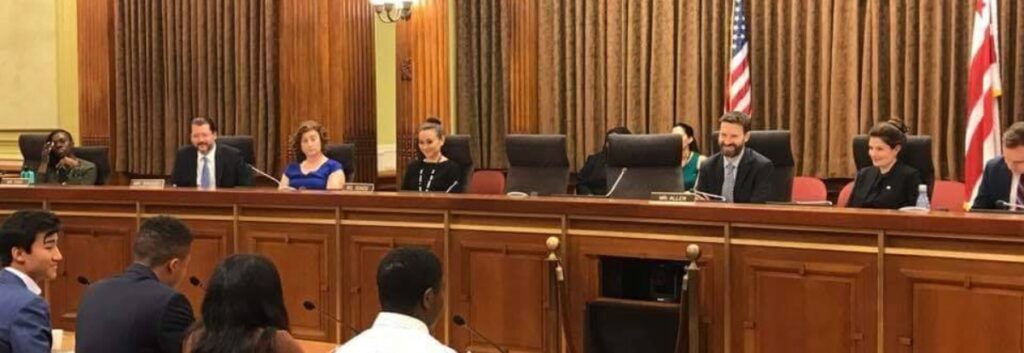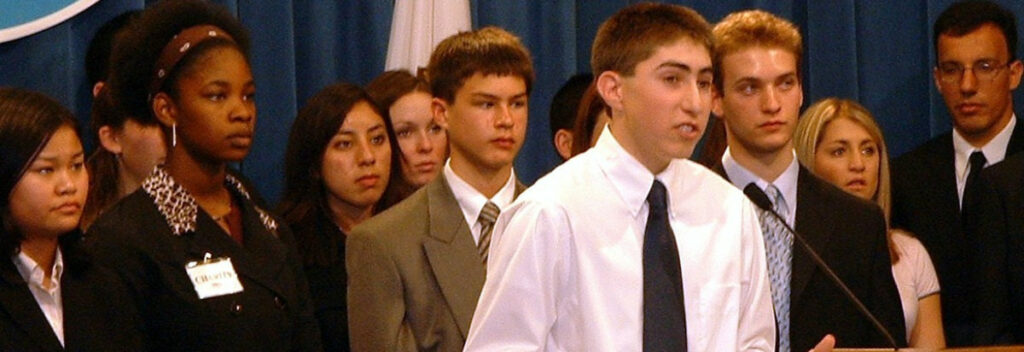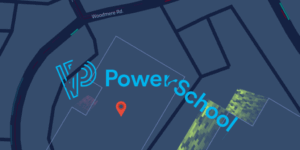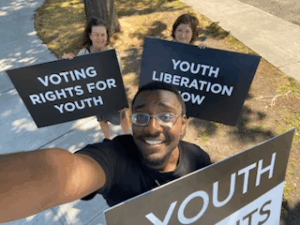Reaching out to members of your community is an important part of promoting your campaign and building your Node. Outreach activities are used to:
- Inform people about your campaign and youth rights in general
- Find out what issues people care about in your community
- Motivate people to get involved
- Find new members for your Node
- Build coalitions with other advocacy groups
Publicize and Document Everything!
Before you plan a specific outreach activity, there are two things to keep in mind. You’ll want to promote your event so that people know about it. And you’ll also want to report on it so that people more people come to the next one. This means taking pictures and writing a little bit about why this issue is important and what your Node is working on. Post your photos on your Node’s social media pages and share it with your community. Also be sure to send your pictures to NYRA National so we can share it on NYRA’s social media. And check out our media toolkit for how to use social and traditional media to promote your campaign.
Using school resources
School projects and assignments
Any time you have some choice about a school assignment, especially if you are working in a group or giving a presentation, you can use it to share your point of view with your teacher and fellow classmates and encourage them to join your campaign. Explaining youth oppression in a class presentation can also help you form a Node or ignite a protest.
Writing for your school newspaper
School newspapers are a great way to reach your entire student body and you can write on a variety of topics, including updates on your Node and the location of your meetings. Of course, you’ll have to answer to whoever edits the paper, but students in public schools have certain free speech rights and may be able to fight censorship even when the school publishes the paper.
Underground papers and zines
You can also choose to self-publish your own underground paper or “zines,” which are small, hand-crafted publications often used in resistance movements. There you’ll have more freedom to write about your ideas. These can also be distributed throughout local communities more easily than online publications, and will feel more personal to anyone who reads them.
Posters and Fliers
Design posters and flyers that have catchy headlines such as “Tired of having too much homework?” or “Want more say in your education?” Hang posters on the walls and hold them up at school events. Hand out fliers and place them in lockers, on car windshields, or wherever your school allows.
Organize a Special Event
Some people will be more comfortable attending a special event than a meeting. Here are some ways for people to learn about youth rights without feeling pressured to join your Node (although you can always encourage people who seem interested and invite them to your next meeting.)
Event Ideas
- Screen a movie or documentary about youth rights or an intersecting issue
- Documentaries about Youth Rights: The War on Kids, Kids for Cash, The Kids We Lose, Agents of Change, Schooling the World, On Being and Becoming, Self-Taught
- Some Pro-Youth Films: The Hate U Give, Dead Poets Society, The Trotsky, Home Alone, The Breakfast Club, Ferris Bueller’s Day Off, Pump Up the Volume, Over the GW, We Are Little Zombies
- Other inspiring activist films: Iron Jawed Angels, Malcolm X, Selma, Born in Flames, Amazing Grace, Sorry to Bother You, How to Blow Up a Pipeline
- Host a guest speaker, such as an elected official introducing pro-youth legislation or another youth rights activist. We can help you find if there are suitable speakers leaders near you.
- Organize a panel discussion or debate on a youth rights issue, such as: “Should we abolish the voting age?” “Should we end compulsory school?” or “Should truancy laws be abolished?”
- Organize a rally or demonstration
- Host a social event at a local restaurant or cafe, like a musical performance with pro-youth songs
- Hold a Node fundraising event like a bake sale or car wash
- Attend a leadership or lobbying training together with other youth leaders
- Give a Know Your Rights training or workshop on youth rights
- Organize a Letter Writing Party to help people write letters to ask their representatives to take action on legislation.
- Organize a session of phone-banking or canvassing. You may be able to connect with other groups that have a voter registration file, but if not, there are free voter files you can find online – they just usually aren’t as accurate. You can find constituents who are likely to support your policy and contact them by canvassing, phonebanking, or postcarding. If there is a pending ballot measure, you can also canvass around your neighborhood to encourage people to support the measure.
- Partner with other groups to organize large-scale events. These could range from simple rallies and marches to mass acts of civil disobedience and wide-spanning boycotts.
Sign-in Sheets
Always have a sign-in sheet available at all of your Node’s activities including meetings, tabling events, and any protests or campus actions. You can also bring one to other organizations’ meetings and events, but it is a good idea to ask permission or let people know. You can also ask your teachers if you can make a two minute announcement about NYRA at the beginning of your classes and pass around a signup sheet.
Your sign-up sheet should collect people contact information and you can add them to an email list. Remember, everyone who comes to your table or your event is a potential new member and while some people won’t want to join your Node, you can still encourage them to sign up to receive email alerts and reminders about NYRA-related actions, meetings, and events on campus. It is important to follow up with each contact.
Hold Open Meetings
Even there’s only a couple of people in your Node, it’s important to set up a time to meet and invite others to it. Some people will just come out of curiosity. Be inviting and don’t be embarrassed to be looking for new people to join.
Tabling
Tabling is another great way to use other events to get the word out about your NYRA Node. You can check out the tabling opportunities exist at local marches such as those for climate change, women’s rights, gay rights, etc. and student events such as orientation and club fair. Hand materials to prospective members and collect contact information to add to your Node’s roster. It also helps to make signs, banners, or flyers so you can effectively display the NYRA logo and messages connected with NYRA’s mission.
Gather materials needed such as:
- Leaflets
- Banner
- Sign-up sheets
Feel free to contact NYRA National if you need help getting these.
Setting up
- Make your table look neat by covering it with a tablecloth, having a banner, and well-organized reading materials.
- Wear a NYRA shirt if you have one.
- Stand up if you can, and be friendly and approachable.
- And never underestimate the attraction of free candy.
What to Say
- Think of a catchy question to ask that will grab their attention. This way, you can have a conversation about the issues before introducing them to NYRA.
- Tell them about your Node and what you do on campus and ask if they’d like to join your email list.
- Make sure you don’t do all the talking. Make each interaction a conversation by asking questions. For example, after you have introduced NYRA you can ask “which youth rights issues are important to you?” If they say something relevant to what your Node is working on, ask them if they would like to be involved in your efforts. If they something that your Node isn’t currently focused on, invite them to your next meeting to discuss their idea.
Connect with your community
- Attend events about intersecting issues and, if you ask a question, be sure to introduce yourself as a member of the National Youth Rights Association. Talk to the organizers and offer your Node’s help as co-presenters for future events.
- Socialize and make friends. Do your best to organize social events outside of your core NYRA Node activities. By developing friendships with your members and facilitating friendships between them, you can make sure that members stay with your Node and are motivated to follow through with delegated responsibilities. Nobody wants to let down their friends!
- Get feedback from your community. If you are undecided about which issue(s) to take on, a short opinion poll could be helpful in determining what level of support exists for various issues. Make a quick survey with five to 10 issues you are considering. (Here’s a sample survey you can customize for your use.) You can also distribute the survey online using a service such as Survey Monkey, but conducting the survey in person allows you to talk to people face-to-face and answer any questions they might have.
- Get support from older people in your community. While your main focus will be to reach out to other young people, you should also try to connect with people who may support you such as teachers and parents.
Coalitions
One useful strategy for building power in activism is forming a larger coalition, an alliance composed of multiple organizations that come together to address the same issue. Rather than having your organization attempt to compete against others in attracting activists to your particular mission and cause, you can demonstrate the interdependence of social causes and collaborate with other organizations for the win-win of powerful, people-driven change. Here’s how to do it:
- Find the common thread in your issue. For example, if you’re working on the voting age, what would make other groups interested in supporting you? If you emphasize the value of voting rights in general, you may find that groups working on expanding voting rights to other groups of people, civic education groups, and political parties (especially youth divisions like Young Republicans/Democrats) will be eager to work with you. If you’re working on curfew laws, other groups might include those interested in police reform. One of our Outreach Coordinators will help you think of other groups in your area.
- Designate your Node’s representatives. Once your NYRA core group has come together, it’s time to start thinking about who from your Node should represent your group within the wider context of the coalition. It can become unwieldy to have too many representatives, so we recommend you pick one or two of your trusted members to attend coalition meetings and communicate between the coalition and Node. However, any number of interested members of your Node can participate in coalition events and activities.
- Make contact! Assign one of your representatives to meet with a representative of the other group. Be clear and upfront about your interests and expectations, and remember to listen equally to their interests and expectations. Where do your group and the other group overlap? Will this collaboration be long- or short-term? Be sure to have someone attend the other group’s meetings to make an announcement about the formation of your NYRA Node, recruit members, and learn from the other group’s organizing strategies and past struggles and successes.
- Build coalition identity. Every coalition needs an identity with which to conduct their work. This will ensure solidarity, increase the power of your efforts, and help to rally support for the united cause. With the other leaders of your coalition, begin by choosing a coalition name and developing a mission statement. Later, you can move on to grander endeavors such as developing branding guidelines and building a website. But there’s no need to do everything all at once! Just the basics at the beginning can still be really powerful. As your coalition develops, you may periodically return to this step to make the coalition even stronger.
- Recruit members. With much of the groundwork laid, now you and the other coalition leaders can harness your collective energies to grow the coalition’s membership. Have each member of your core group reach out deeply into their networks to bring additional organizations and individuals into the fold. Also consider writing and sending out recruitment letters, reaching out via social media, and taking out advertisements in local media.
Sounds exciting? A bit daunting? Sure. Coalition building is hard work, but ultimately very rewarding for everyone involved.
Potential Partner Organizations On Campus
Very likely, there are other campus organizations who would be open to work with your Node. Check your school’s website for a complete list of campus organizations.
- Students groups disproportionately impacted by ageism are a natural ally. If your campus has active student groups which focus on economic & racial, social justice issues there will likely be some overlap with your goals. Reach out to them to partner on a meeting or event.
- Politically oriented organizations like Young Democrats, Students for Liberty, College Republicans, Progressive Student Alliances, and others may want to collaborate with your Node.
- Health and wellness organizations such as your campus’ health services program, a sexual health and/or violence student group, or counseling and psychological services.
- Fraternities and sororities typically cultivate cultures that include partying/drinking, and therefore present a great opportunity to collaborate on drinking and smoking age issues.
More potential allies can be found among community-service groups, college student associations, faith communities, and groups for people of a particular identity or background.
